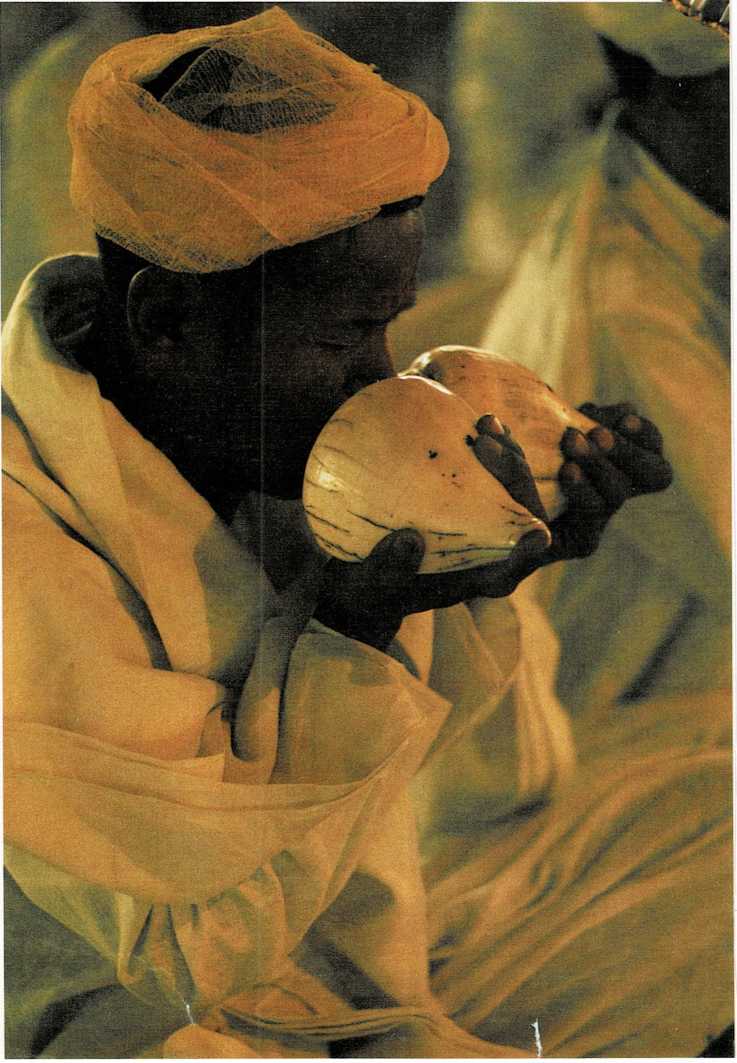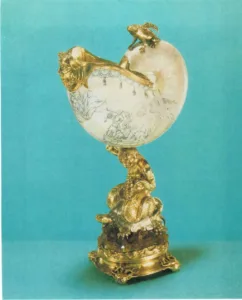
Jewels from the sea
People have always looked upon sea shells as beautiful, precious
objects. As long as thirty thousand years ago, sea shells were used as
jewelry. Necklaces made of sea shells have been found in the graves of
prehistoric people of that time. And it seems that some women of
prehistoric times decorated their clothes by sewing on hundreds of sea
shells.
When great civilizations began to rise, sea shells were used to create
beautiful works of art. Five thousand years ago, artists of ancient Ur,
a city in what is now the country of Iraq, used gold, colored stones,
and pieces of sea shells to make gorgeous designs. These were inlaid
(glued) onto wooden chests, parts of musical instruments, and the walls
and pillars of temples and palaces.
Some kinds of sea shells were prized as rare and beautiful drinking
cups. One of these was the shell of the large green snail. This shell
makes a rounded, gleaming, palegreen cup as much as eight inches (20
centimeters) wide. Viking kings had these shells mounted on silver stems
and used them as drinking cups.
In the 1600’s, goldsmiths often carved the shell of a chambered
nautilus. They then mounted it on a fancy gold stem and set jewels into
it. It made a truly beautiful—and expensive—drinking goblet.
In many places, sea shells were considered so beautiful and precious
they were used as money. The kinds of shells called cowries
[(kow]{.smallcaps} reez) were used as money in parts of China more than
four thousand years ago.

cup made of a nautilus shell
Until about a hundred years ago, cowries were also used as money in
parts of Africa. You could buy a chicken for twenty-five C cowrie
shells, a goat for one hundred shells, and a cow for twenty-five hundred
shells.
The cowrie shells that were used for money are about the size of a bean.
To this day, shell collectors call them \”money cowries.”
For thousands of years, people have made music and sent signals by
blowing into shells. This man from Imphal, India, is using a shell as a
musical instrument.

Many of the North American Indians also used sea shells for money.
Different tribes had different names for this shell money. But, after
a time, it was all called \”wampum.”

To make wampum, the Indians strung shells together, like beads. The
strings of wampum were usually the length of a man’s forearm, from elbow
to fingertips. The tanned hide of a large deer cost about seven or eight
arm-lengths of wampum.
The Indians also made wampum into belts. To make designs and patterns in
the belts, they used different colored shells. The belts were used as
records of agreements and important happenings between tribes.
Like many other people in all parts of the world, the Indians also used
sea shells as ornaments and decorations. They sewed them to clothes,
shields, and headdresses. And they wore them as necklaces and earrings.

